
Emergence 2014 Opening Reception Photos





The Stairwell 2009, by Rosalind Kennedy, USA
artwork | the artists | artists’ talk | the jurors | reception photos
The voice and vision of 60 artists from Burkina Faso, Canada, Finland, Ireland, Israel, Kenya, Korea, Lebanon, New Zealand, Singapore, United States and Zimbabwe, will be presented in the exhibition “Emergence 2014: International Artists to Watch.” Artworks and short films offer a global perspective on the cultural, political and societal concerns of contemporary artists.
Elaine Alibrandi, USA
Maya Freeelon Asante, USA
Gloria Askin, USA
Ronald Beverly, USA
Patrick Burns, USA
Nina Buxenbaum, USA
James Buxton, USA
David Carlson, USA
Wesley Clark, USA
Suzanne Coley, USA
Alyscia Cunningham, USA
Jessica C. Damen, USA
Anna U Davis, USA
Blanco de San Roman, Spain
Maria-Theresa Fernandes, Kenya
Ric Garcia, USA
Shaunte Gates, USA
Lorenzo Gattorna, USA
Jehanne-Marie Gavarini, USA
Atar Geva, Israel
Susan Goldman, USA
Karina Griffith, Canada
Michael Gross, USA
LaToya Hobbs, USA
Ronald Jackson, USA
Benjamin Jancewicz, USA
M. Scott Johnson, USA
Rosalind Kennedy, USA
Jeffrey Kent, USA
Kung Chee Keong, Singapore
Lauren Shea Little, USA
Robert Machiri, Zimbabwe
Florence Alfano McEwin, USA
Lin Rebolini McJunkin, USA
Edmond Nassa, Burkina Faso
Zahra Nazari, Iran
Joseph O’Neill, USA
Bart O’Reilly, Ireland
Ruth Pettus, New Zealand
Greg Pitts, USA
Steve Prince, USA
Terrence Reese, USA
Rotem Reshef, Israel
Jamea Richmond-Edwards, USA
Arvie Smith, USA
Lynda Smith-Bugge, USA
Casey Snyder, USA
Antar A. Spearmon, USA
Kara Bettie Speckhals, USA
Stan Squirewell, USA
Shahrzad Taavoni, Iran
Terry Tapp, USA
Maxine Taylor, USA
Rebecca Weed, USA
Stanley Wenocur, USA
Alison Wiklund, Finland
Morgan Willingham, USA
Sea Yoon, Korea
Helen Zughaib, Lebanon

 Voodoo (detail), 1977 by Alvin Hollingsworth
Voodoo (detail), 1977 by Alvin Hollingsworth
Art of the Collectors IV features works from private collections created by prominent African and African American artists. Included in the exhibition are paintings and sculptures by artists who played an integral role in the Harlem Renaissance, as well as those whose works informed the landscape of American art.


Flower Power V (detail) by Susan Goldman
artists’ talk | about the artists
They seek refuge in the joy of art making; and offer the color yellow as a metaphor for exploring notions of self-preservation and empowerment as they make their imprint in ceramics, paintings and prints.


Flower Power V (detail) by Susan Goldman
about the exhibition | artists’ talk

I experience pure beauty and pleasure in their making. These simple, pure, and timeless images heal through their visceral and meditative qualities. I take respite from an unrelenting and aggressive environment in the creation of these highly saturated, colorful life size totems. Like an archer aiming for the bull’s eye, concentration and calm focus are required. The center is off center. It is not perfect, but we perceive it to be perfect. Seeing through our eye, the pupil, the target is always moving, but we keep trying to aim for the center, aiming for balance and perfection, an illusion to be in control. Throughout history the human need to create beauty and order out of chaos, has sustained and restored us through immeasurably challenging times. The world may be going to hell, but I am printing yellow and it feels great!
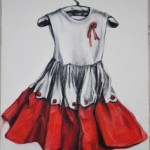
My work is not political or angst-laden. I strive to make images that are honest and without subterfuge. Often, the concept succumbs to the process and the work becomes as much about the drawing or painting or printmaking, as the idea.
My last body of work addresses the concept of displacement, specifically the displacement of immigrants. Having emigrated to the United States at a young age, part of my own psyche is bounded by the experience of changing cultures. I examine the differences and similarities by inspecting the minutia, the objects of everyday life, in one culture versus another: an embroidered green dress to a sailor dress, a rag doll to Barbie. Collectively, these things represent the dichotomy of two different worlds, to each of which I belong. This body of work also speaks to our self-actualization as women; how we perceive ourselves; how our experiences and upbringing affect who we become.
Ultimately, there is a thread that connects all of the work together. My color and formal sensibilities, which draw upon my training as well as my cultural background, and my interest in creating a rich visual, if not tactile, surface, are reflected in the drawings, prints and paintings. I hope that my work remains truthful and continues to evolve even as I do.
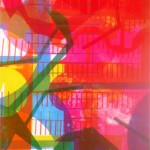
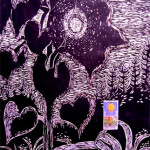
Nature’s resonance is cathartic for me, soothing, healing, and inspiring, so I image natural forms of connection with lyrical expression. In this series, Tarot Cuts through the Woods, the natural forms ebb and flow to conjure our futures, as oracles, as well as present equanimity that I always long for. While Ad Reinhardt, Jimmy Ernst, and Sidney Gross were important teachers for me, I have developed my own voice, female and naturalistic, abstract and realistic, in which I transcendentally soften the world’s hard-edged lines through interpretive painting and printmaking.

I explore the physical and psychological stages couples inhabit by photographing old dollhouses, miniature furniture and vintage dolls. I create large size pigment prints of ordinary intimate scenes and voyeuristic portraits and am interested in evoking the tensions, anxiety, and muddle that exist in these private spaces. The things we all strive to keep hidden behind closed doors. I manipulate the viewer’s sense of time and space and offer frozen tableaux that suggest a living narrative. Messy beds, knocked over drinks, bras and clothing flung on the floor hint at feelings of lust, desire, fear, love, faith, anticipation, and expectation. I distill personal experiences and draw on memories and images from both childhood and adulthood to engage in a contemporary discourse.
The ironic titles of my work are inspired by self-¬-help relationship books, instant message texts and the season finale of The Bachelor and allow me to make light of uncomfortable situations. Although I present constructed vignettes peppered with references to popular culture, I demonstrate the universality of human reactions and emotions.

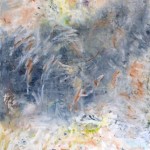
mostly fragments or traces of time and place.
Memory occasionally
and poetry always.
You know how one word in a poem opens
an interior door over and over.
I am always surprised.
like us.
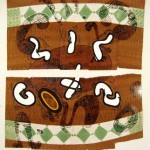
Her latest body of work “At the Table”, was created for the exhibiton “THE WORLD IS GOING TO HELL, AND I AM PRINTING YELLOW!”. The implied absurdity in the show’s title (concern for choosing a color when there are greater concerns) belies the real importance of the act in a time when the world does seem as if it is coming apart. Artmaking is the sustainance needed to deal with this world. “At the Table” uses her signature symbols to explores the simple yet very complex act of coming ‘to the table’ to break bread.

The presentation of her prints in ensemble groupings helps Stockton to better enlarge on her themes of variation, change, and evolution. With her balancing of representation and abstraction, the Agrarian prints suggest a seasonal passage of time that she hopes viewers will find meditative and playful.
Her large woodcuts are printed from three-foot square woodblocks that she carves, a different block for each color layer. Her prints are made with the assistance of master printer, Chris Shore, at The Center for Contemporary Printmaking in Norwalk, CT and Susan Goldman of Lily Press in Rockville, MD. Since 2005, Eve’s art has been regularly featured on the cover of Nature Genetics Magazine
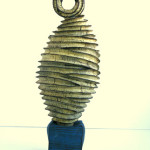
My inspiration comes from these small artifacts I collect on walks or trips with my family. These fragile imprints of nature provide me with rich visual vocabulary, endless shapes and colors. I work in a quiet solitude in my studio and find this peaceful loneliness a perfect stage for my play with clay. In the silence sometimes there is a moment of harmony when the clay and I understand each other perfectly, we know exactly what the other one wants to do. Those are the moments that I long for and this longing draws me back to the studio to open up a new bag of clay and start again.

Galerie Myrtis announces a call to artists for its juried exhibition “Emergence 2014: International Artists to Watch” to be held September 14 – November 15, 2014. The exhibition will explore the renaissance of artistic expression and creativity in contemporary art from a global perspective. An exhibition catalogue will be published and participating artists will receive complimentary copies.
Jurors: Sharon Burton, Founder, The Artinista Art Advisory, Washington, D.C.; Robert Devereux, Founder, African Arts Trust and Chairman, Frieze Events & Magazines Ltd, London, England; Deana Haggag, Director, The Contemporary (Museum) of Baltimore, Baltimore, Maryland; and Makgati Molebatsi, Board Member, Bag Factory Artists Studios, Johannesburg, South Africa.
Curator: Myrtis Bedolla, Founding Director, Galerie Myrtis
Artwork: The gallery seeks two and three-dimensional works of art and short films no longer than 15 minutes in length by emerging to mid-career artists. Consideration will be given for works created using digital technology, drawing, film, installation, painting, photography, sculpture, and works on paper in editions of 150 or less.
Note: Giclée prints accepted by photographers only. Must be artist’s original image.
The jurors will select works that are avant-garde and thought provoking, and serve to encourage, enlighten and inspire. All works must be original in both concept and execution, and completed within the last 2 years.
Eligibility: Artists 18 years or older from diverse ethnic backgrounds are encourage to participate. There are no restrictions on geographic location. Artwork and film must be available for purchase. Artists with gallery representation are eligible to apply.
Commission: Galerie Myrtis will retain a commission of fifty (50%) percent on the sale of artworks/short films sold during the exhibition. Galleries please contact Galerie Myrtis for commission policy at myrtis@galeriemyrtis.com
About Galerie Myrtis

Submission Period:
March 1 – June 15, 2014
*Acceptance Notification:
no later than: July 15, 2014
Submission Fee:
$20.00 for up to 6 images and/or 3 short films
* Upon acceptance artist will receive the Exhibition Agreement.


The Stairwell 2009, by Rosalind Kennedy, USA
 Sharon Burton is a Washington, DC based artist, art advisor and independent curator. She is the founder and Creative Director of SJB Creative Ventures, LLC which consists of two entities: Gemini Visions Art Studio (launched in 2007) which focuses on her own artistic endeavors as a mixed media/collage/assemblage artist and The Artinista Art Advisory (launched in 2012) with the mission to increase number of professional women art collectors to close the gender gap in fine art collecting through a variety of art consultancy services.
Sharon Burton is a Washington, DC based artist, art advisor and independent curator. She is the founder and Creative Director of SJB Creative Ventures, LLC which consists of two entities: Gemini Visions Art Studio (launched in 2007) which focuses on her own artistic endeavors as a mixed media/collage/assemblage artist and The Artinista Art Advisory (launched in 2012) with the mission to increase number of professional women art collectors to close the gender gap in fine art collecting through a variety of art consultancy services.
Ms. Burton served as the first curator of the Tubman-Mahan Art Gallery which was located within the Center of Green Urbanism in Washington, DC from 2010-2011 which she coordinated a variety of environmentally-themed exhibitions featuring local emerging artists. Between 2006-2010, Sharon served as an art curator, consultant, juror and intern to a variety of organizations and venues in the Washington, DC area including the former Ramee Art Gallery (Washington, DC), Overdue Recognition Art Gallery (Bowie, Maryland), the Millennium Arts Salon (Washington, DC), DC Chapter of the Women’s Caucus for Art, Liberated Muse Productions (Washington, DC), and Lil So So Productions (Washington, DC).
Sharon has contributed as blogger/arts correspondent highlighting local artists and exhibitions for online websites including the DC Examiner.com (DC Fine Arts Examiner 2010-11), LilSoSo.com (local entertainment website) and the former MahoganyButterfly.com. She is currently contributing as a blogger for a new online lifestyle magazine, Domicilemag.com focusing on highlighting local artists and art galleries in the Metro Washington, DC and Baltimore, Maryland area.
 After graduating from Cambridge University, Robert Devereux worked with Amnesty International and Macmillan Publishers before joining Virgin in 1980 as Richard Branson’s partner. He established the entertainment division of the company of which he was Chairman, which included the creation of Virgin Vision, in its day Europe’s leading film and video producer and distributor, the launching of Virgin Radio, Virgin Net, Virgin Interactive Entertainment and masterminding the purchase of Virgin Cinemas.
After graduating from Cambridge University, Robert Devereux worked with Amnesty International and Macmillan Publishers before joining Virgin in 1980 as Richard Branson’s partner. He established the entertainment division of the company of which he was Chairman, which included the creation of Virgin Vision, in its day Europe’s leading film and video producer and distributor, the launching of Virgin Radio, Virgin Net, Virgin Interactive Entertainment and masterminding the purchase of Virgin Cinemas.
In 1996 Robert sold his interests in Virgin in order to concentrate on his family, leisure investments and his charitable activities. He has been Chairman of Soho House plc and The Big Sleep Hotels Ltd.
He is currently the Chairman of New Forest Holdings Ltd, a sustainable and commercial African Forestry company with operations in Uganda, Rwanda, Tanzania and Mozambique. He is also Chairman of Frieze Events & Magazines Ltd, the London based art fair & publishing business. He is also a member of the supervisory board of Catalyst Partners, a Nairobi based East African private equity firm.
His non-commercial interests include the Portobello Trust, Save the Rhino International, Westside School and Kuona Trust. He has established The African Arts Trust, which through its grant making will support professional practicing artists trying to make a livelihood out of art in Africa. He is Chairman of the Tate’s African Acquisitions Committee and on the advisory board of the Cambridge Conservation Initiative. Robert has recently joined the Global Advidsory Council Board of Ifa Lethu, a Tshware based non-profit foundation. He has been a Governor of The South Bank Centre, a Founding Director of the Central London Training and Enterprise Council and a Founding Director of North Kensington City Challenge.
Robert spends a significant amount of time in East Africa, where he owns a house in Lamu in Northern Kenya, and is involved in a number of community and commercial projects. He is also a passionate collector of modern and contemporary British art and African art and has formed, in partnership with friends, the Daraja collection.
 Deana Haggag has been the Director of The Contemporary since the spring of 2013. Prior to her work with The Contemporary, she was the Curator-in-Residence at Gallery CA, which is also located in Baltimore, MD in the City Arts building — home to over 90 artists. Deana received her MFA in Curatorial Practice from the Maryland Institute College of Art and a BA from Rutgers University in Art History and Philosophy. In addition to her work at The Contemporary, Deana curates independent exhibitions, consults on various public art initiatives, and contributes to cultural publications. She is on the board of Whoop Dee Doo, Station North Tool Library, and is the Dean of the Baltimore Chapter of the Awesome Foundation. Deana was named “10 People to Watch Under 30” by the Baltimore Sun in 2013.
Deana Haggag has been the Director of The Contemporary since the spring of 2013. Prior to her work with The Contemporary, she was the Curator-in-Residence at Gallery CA, which is also located in Baltimore, MD in the City Arts building — home to over 90 artists. Deana received her MFA in Curatorial Practice from the Maryland Institute College of Art and a BA from Rutgers University in Art History and Philosophy. In addition to her work at The Contemporary, Deana curates independent exhibitions, consults on various public art initiatives, and contributes to cultural publications. She is on the board of Whoop Dee Doo, Station North Tool Library, and is the Dean of the Baltimore Chapter of the Awesome Foundation. Deana was named “10 People to Watch Under 30” by the Baltimore Sun in 2013.
 Makgati Molebatsi has extensive experience in marketing and integrated communications (advertising, promotions and public relations). She has over 30 years experience gained from various industries; FMCG, retail and energy and advertising.
Makgati Molebatsi has extensive experience in marketing and integrated communications (advertising, promotions and public relations). She has over 30 years experience gained from various industries; FMCG, retail and energy and advertising.
After working briefly for the 2nd Johannesburg Biennale in a voluntary capacity, her interest in the visual arts was stimulated. The interest has led to establishing meaningful relationships with a large number of artists, curators and art critics locally and internationally. She sits on the board of the Bag Factory Artists Studios in Johannesburg, a visual art organization providing studios for artists and residency programmes for local and international artists; and also serves on the organizations selection committee. She participates in the Business and Art South Africa’s mentorship programme, and is currently mentoring the Director of the Ithuba Art Fund, an initiative which introduces early career artists to the art market.
 Myrtis Bedolla is founding director of Galerie Myrtis, a contemporary fine art gallery located in Baltimore, Maryland. She was featured in the October 2013 issue of the Baltimore Style Magazine article “Women in the Arts” which honored women at the helm of the Baltimore art scene.
Myrtis Bedolla is founding director of Galerie Myrtis, a contemporary fine art gallery located in Baltimore, Maryland. She was featured in the October 2013 issue of the Baltimore Style Magazine article “Women in the Arts” which honored women at the helm of the Baltimore art scene.
Myrtis possesses over 20 years of experience as an advisor to private and institutional collectors in the acquisition and sale of fine art; and provides professional curatorial services, lectures and educational programming to corporate, civic and arts organizations. She is the recipient of the Foreign Language and Area Studies (FLAS) Fellowship, African Language Institute, Shona Language and Culture, from Michigan State University; holds a Bachelor of Science degree in Business Administration from the University of Maryland, University College, and received her curatorial training at the Maryland Institute College of Art in Baltimore, Maryland. As cultural liaison for the embassies of Ghana, Haiti, Mali, Republic of Georgia and Zimbabwe; Ms. Bedolla uses art to encourage cultural exchange and awareness. One of the highlights of her career was an opportunity to participate in a project with the National Museum of Niger, Niamey to research and document the utilitarian and ceremonial art forms created by women of the eight ethnic groups in Niger. The objects collected were featured in the exhibition: The World of Women of Niger mounted at the museum in 2005.
Ms. Bedolla is a contributing writer to The International Review of African American Art and Valentine Magazine; online newsletters: ARTINFO and IRAAA (International Review of African American Art). She serves on the Art Advisory Board, University of Maryland University College, College Park Maryland; Board of Directors for the Smith Center for Healing and the Arts, Washington, D.C.; and Executive Board for the Station North Arts and Entertainment District, Baltimore, Maryland.
Myrtis is a member of ArtTable: a national organization for professional women in the visual arts. And sits on the Practicum Advisory Committee for the Masters in Curatorial Studies for Maryland Institute College of Art; Audience Committee for the Walters Art Museum; Leadership Council Committee for the Open Society Institute of Baltimore, Baltimore, Maryland; Scholarship Committee for the Congressional Black Caucus, Washington, D.C. and has served on the Art Advisory Committee for the Deutsch Foundation, and is a past Grant Panelist for the District of Columbia Commission for the Arts and Humanities.
Myrtis Bedolla photo credit: Baltimore Style Magazine, Justin Tsucalas, Photographer

Artwork
• File Labeling – files must be titled with the number corresponding to the image list, followed by the artist’s last name and title of artwork.
Example: 1-Brown-skyblue.jpg
• Files must be in jpg, tiff or png format with a maximum file size of 2 mb. Note: If your artwork is selected for the catalog we may request a print quality image file.
• Include an Image Sheet with a thumbnail print of the artwork. Beside each thumbnail include entry number, artist’s last name and title.
Short Film
• Provide link for full length viewing of short film(s). Duration limited to 15 per minutes per film or less.
• Include Reference Sheet with entry number, artist’s last name, title and duration.
Documents
• Artist’s Statement
• Biography
• Resume
• Image Sheet
• Reference Sheet
[/jbox]
About Galerie Myrtis

Submission Period:
March 1 – June 15, 2014
*Acceptance Notification:
no later than: July 15, 2014
* Upon acceptance artist will receive the Exhibition Agreement.


National Aquarium in Baltimore, 1994, Edition no: 32/75, Screenprint, (image: courtesy Steven Scott Gallery)
view the exhibition | watch artists’ talk
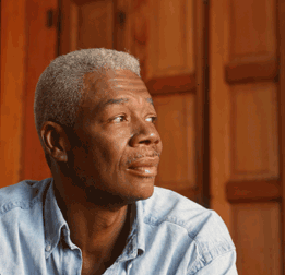
During his high school years, Tom attended Carver Vocational High School (1963) and went on to earned a scholarship to the Maryland Institute College of Art where he received both his Bachelor of Fine Arts (1967) and Master of Fine Arts (1987) degrees, subsequently retiring from teaching after 20 years in the Baltimore City School system to become a full-time artist. He was influenced by black artists such as Jacob Lawrence and Aaron Douglas, evidenced in his use of flat color shapes, and the writings of Langston Hughes. He also drew inspiration from patterns analogous to those found in traditional American quilt-making.
Miller was commissioned by the Mayor’s Advisory Committee on Arts and Culture to create six murals from 1991-1998. Of them five remain, and are a testament to his creative genius. They continue to bring beauty in the midst of blithe. The murals grace the walls of buildings in Baltimore’s inner city and are themed around racial pride and the concerns of the black community. The artist used brightly colored and at times whimsical figures to conveying messages of hope and self-determination.
In one of his most powerful murals, Miller depicts a black silhouetted man with a muscular physique wearing a white T-shirt. The black figure, surrounded by an exotic setting, is seated on a yellow sand beach holding a book. Above him is a bright blue sky with a white puffy cloud. There is a tall flower which towers over him and he is joined by a curious bird who sits perched by his side. On the pages is an African proverb: “However far the streams flows it never forgets its source.” Here the artist sought to inspire young men, and of this mural he commented “I wanted to say a person could travel and expand his mind through reading.” And there’s the more subtle message “that you can’t be a strong African American male — or any male for that matter — without being literate.”
Miller gained a reputation as being one of the most renowned contemporary artists of Baltimore. He distinguished himself though his self-described style of “Afro-Deco” painted furniture pieces. Tom recycled old objects, tables, chairs, cabinets and bookcases in his art furniture making. He used color and pattern, statement, satire, and whimsy in an African American vernacular where he cleverly fought against racial stereotyping; and in doing so, created an iconographic system of his own. Miller’s objects, both utilitarian and works of art possess iconic images of animal motifs, Aunt Jemimas, pink flamingos, fruits, birds, palm trees, and watermelons juxtaposed with black faces to address social injustices using humor and wit.
In contextualizing Miller’s painted furniture in a 1991 essay, Lowery Sims, then curator of the Metropolitan Museum of Art draws parallels between the artist’s work and Dahomey textiles, 18th century French furniture makers and 19th century African Americans “who successfully created a synthesis of African decoration and European cabinetry”. Sims suggests these elements are evidenced in Miller’s art furniture making. Lowery Sims, Ph.D. is currently curator for the Museum of Arts and Design in New York.
Traditions unique to Baltimore’s African American community were the themes of Miller’s 1994 screen prints. In “Summer in Baltimore” located at 1339 E. North Avenue, he depicts a black arabber with horse-drawn cart selling watermelon. In the shadow sits the Washington Monument and a patron who peers hungrily from a window awaiting a bite of the delicious fruit. In its companion screen print “Maryland Crab Fest”, Miller draws from his African roots as he portrays a family gathering. Seated around a table covered with crabs is a young man wearing a kufi cap, he is joined by another donning a Malcolm X T-shirt, and a girl with “big Baltimore hair” inspired by traditional African braiding. Other family members and animals join the feast as music blares from a boom box.
In 1996, the National Aquarium in Baltimore commissioned Miller to create what would be his final screen print titled “The National Aquarium in Baltimore. In it, the artist depicts school groups and families of all ethnicities visiting the national treasure. The imagery is filled with joy, conveying the artist’s affinity for the aquarium which was one of his favorite places in the city.
Miller became one of the first African American artists from Baltimore to be granted a one-man show at the Baltimore Museum of Art in 1995. His work has also been featured in group exhibitions at the Smithsonian Renwick Gallery, Washington, DC; American Craft Museum, New York; Studio Museum in Harlem, New York; and Contemporary Art Centers in New Orleans, Louisiana and Cincinnati, Ohio.
His works are in the permanent collections of the Academy Art Museum, Easton, Maryland; and Baltimore Museum of Art, Baltimore; Maryland Historical Society; Reginald F. Lewis Museum of Baltimore, Maryland; and the University of Maryland University College in College Park, Maryland.
On June 23, 2000, Miller died at the age of 54 after an 11 year battle with AIDS at The Joseph Richey Hospice in Baltimore. He will always be remembered for his beautiful art, wit and charming personality.
References:
Adams, Eric. “Neo-Romanticism on Display at Steven Scott.” The Sun. Baltimore, MD. 24 May 1991.
Dorsey, John. “Veneer of Humor Covers Furniture of Tom Miller.” The Sun. Baltimore, MD. 12 May 1993.
Dorsey, John. “A Showcase of Black Art.” The Sun. Baltimore, MD. 23 January 1990.
Sims, Lowery. “Tom Miller’s Afro-Deco.” Exhibition Essay, Steven Scott Gallery, Baltimore, MD. Nov. 1991.
Murphy, Eilleen. “Tom Miller Obituary.” City Paper. Baltimore, MD. 28 Jun 2000.
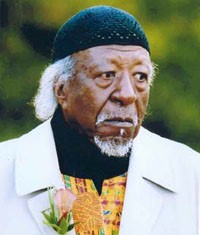 Andy Pigatt (1928-2009) was born in Raeford, North Carolina, October 20, 1928. He received vocational training in general woodworking and carpentry at George Washington Carver High School. Pigatt served in the United States Army in 1950-55; studied cabinetmaking on the G.I. Bill after leaving the military; and apprenticed under James W. Leach, Baltimore, Maryland in refinishing and repairing period antique furniture.
Andy Pigatt (1928-2009) was born in Raeford, North Carolina, October 20, 1928. He received vocational training in general woodworking and carpentry at George Washington Carver High School. Pigatt served in the United States Army in 1950-55; studied cabinetmaking on the G.I. Bill after leaving the military; and apprenticed under James W. Leach, Baltimore, Maryland in refinishing and repairing period antique furniture.
Pigatt performed free-lance work in New York after 1963, working for firms such as Worldwide Antiques, Leonard’s Antique Gallery, Knapp and Seigal Antiques, et al. Restoration experience includes work on Chippendale, Jacobean, Sheraton, Queen Anne and other types of collections.
Anderson launched his sculpture career late in 1960’s. A self-taught sculptor, his work is represented in a number of private and institutional collections.
“Nigger Chained” a seminal work is in the permanent collection of the Schomberg Center for Research in Black Culture in New York. Other sculptures are in the Brooklyn Museum, Brooklyn, New York; Reginald F. Lewis Museum, Baltimore, MD; and the American Visionary Art Museum, Baltimore, MD.
Pigatt participated in exhibitions sponsored by the American Federation of Fine Arts, the Urban Center of Columbia University, the Harlem Council and Bell Telephone Company. From December, 1967-1976, his work was exhibited in such venues as the Empire State Building, Observation Tower, New York, NY; The Pam Am Building, New York, NY; the Brooklyn Museum, New York, NY; Columbia University, New York, NY; Elma Lewis School of Fine Art, Dorchester, MA; University of Florida, Gainesville, FL; Milliken University, Decatur, IL; Reading Public Museum and Art Gallery, Reading, PA; University of Wisconsin, Milwaukee, WI; and the Illinois State Museum, Springfield, IL.
Significant exhibitions include: “Black New Artists of the 20th Century: Selections from the Schomburg Center Collections”, 1970; traveling exhibitions “New Black Artists”, 1971 and “Black Art – Ancestral Legacy: The African Impulse in African-American Art”, 1989-91.
Anderson’s work was favorable reviewed and commented upon by such notables as John Canady of The New York Times on October 8, 1969, with a headline stating “Sculpture Is Strength of ‘New Black Artists’ Show” and Robert Taylor of the Boston Globe on November 22, 1973 with the headline “Anderson Pigatt’s sculpture seen in ‘Speaking Spirits’”. Other comments and accolades come from correspondence from Thomas W. Leavitt, Director of the Herbert f. Johnson Museum of Art at Cornell University, Joseph V. Noble, Vice Director for Administration at the Metropolitan Museum of Art in New York, and Dr. Robert Bishop, Director of Museum of American Folk Art in New York.
Mr. Pigatt was selected to participate in the exhibition and publication, Black Art Ancestral Legacy, sponsored by the Dallas Museum of Art, which showed at the High Museum in Atlanta, the Milwaukee Art Museum, and the Virginia Museum of Fine Art in Richmond. His work has been purchased by such notables as Singer Richie Havens, artists Andy Warhol and John Biggers.
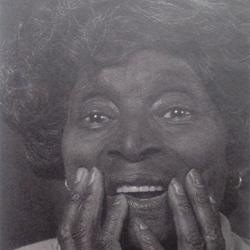 Elizabeth T. Scott (1916-2011)grew up in Chester, South Carolina, the sixth of fourteen children. There were seven brothers and seven sisters. Her father sharecropped the land where her grandparents had lived as slaves. “He was a sharecropper and we were sharecroopper’s children. Victims,” she says. The tradition of quilting was an integral part of the rural black American experience. Elizabeth’s mother and father quilted. At the age of nine, she began her first quilt and has since developed into an extraordinary artist. Her images not only ellicit rememberances of Africans’ past but evoke new visual traditions in the display of bright colors, complex pattern, animals, buttons, rocks, and “monsters” that grace the stitched surface of her quilts.
Elizabeth T. Scott (1916-2011)grew up in Chester, South Carolina, the sixth of fourteen children. There were seven brothers and seven sisters. Her father sharecropped the land where her grandparents had lived as slaves. “He was a sharecropper and we were sharecroopper’s children. Victims,” she says. The tradition of quilting was an integral part of the rural black American experience. Elizabeth’s mother and father quilted. At the age of nine, she began her first quilt and has since developed into an extraordinary artist. Her images not only ellicit rememberances of Africans’ past but evoke new visual traditions in the display of bright colors, complex pattern, animals, buttons, rocks, and “monsters” that grace the stitched surface of her quilts.
Elizabeth T. Scott provides the annals of history with a critical challenge to address the aesthetic contributions of blacks in the New World. More importantly, she presents us with the aesthetic continuity of deep-seated traditions, practiced over generations of time through the linkage of the extended family. We have few records of the African-American families who had active and continuous histories of involvement in the plastic arts; the creative energies of Scott and her family have prevailed where others have yet to be discovered.
Scott practiced her art until 1940, when she moved to Baltimore and ceased to make quilts on a regular basis. Through the constant encouragement of her daughter and her friends, Scott began to quilt again in the mid-1970s. She developed a remarkable body of work and began to exhibit her quilts in conjunction with the work of her daughter, Joyce Jane Scott, a mixed media-performance artist, at Gallery 409 in Baltimore and the Art Gallery of the University of Maryland at College Park. Scott worked relentlessly, and as she produced more quilts, she was invited to teach and lecture at colleges, universities, recreation centers, special workshops, and senior citizens’ groups throughout the state of Maryland. She was asked to exhibit and lecture at the Metropolitan Museum of Art, the Studio Museum in Harlem, the Smithsonian Instutition’s Folk Life, Festival, as well as at numerous galleries along the east coast from New York City to Washington, DC.
Scott worked intermittently on that first quilt, begun at the age of nine, for fifty years–hence its title, the Fifty Year Quilt. Her mother, Mamie, took an active interest in Scott’s selection of cloths and colors; at one point, Scott recalls, her mother made her remove a square from the lower right corner because it was too bright. The Fifty Year Quilt is embellished with embroidery and stitchery that form images and symbols of flowers, stars, and animals.
The Plantation Quilt, one of a new series completed in 1979, is conceived from a double perspective. The stars, which are placed almost randomly across the surface, approximate their positions in the sky on a clear evening, just as they might have been seen by women who sat out on their porches sewing and piecing after a long, hard day of work. The stitches under the star pattern take on the contours of a farm, with rows of stitching standing in for the rows of crops. “That’s the way the fields were surveyed off,” Scott explains. “Every corner had to be filled. There were no leavings, no spots in the field. The fields had to be finished.”
-excerpted from the WCA Honor Awards Program of the National Women’s Caucus for Art Conference, Boston, MA, February 10-13, 1987


National Aquarium in Baltimore, 1994, Edition no: 32/75, Screenprint, (image: courtesy Steven Scott Gallery)
about the artist | watch artists’ talk
The In and Outsiders explores formally trained artist Thomas (Tom) Miller’s (1945-2000) brightly colored “Afro-Deco” painted furniture pieces and silkscreen prints, and self-taught artists Anderson (Andy) Pigatt’s (1928-2009) evocative sculptures and Elizabeth T. Scott’s (1916-2011) richly embellished quilts. Their works are inspired by folklore, imagination and memory, woven around material cultural and social commentary and rooted in the deep-seated tradition of storytelling through art making.
Myrtis Bedolla, Curator